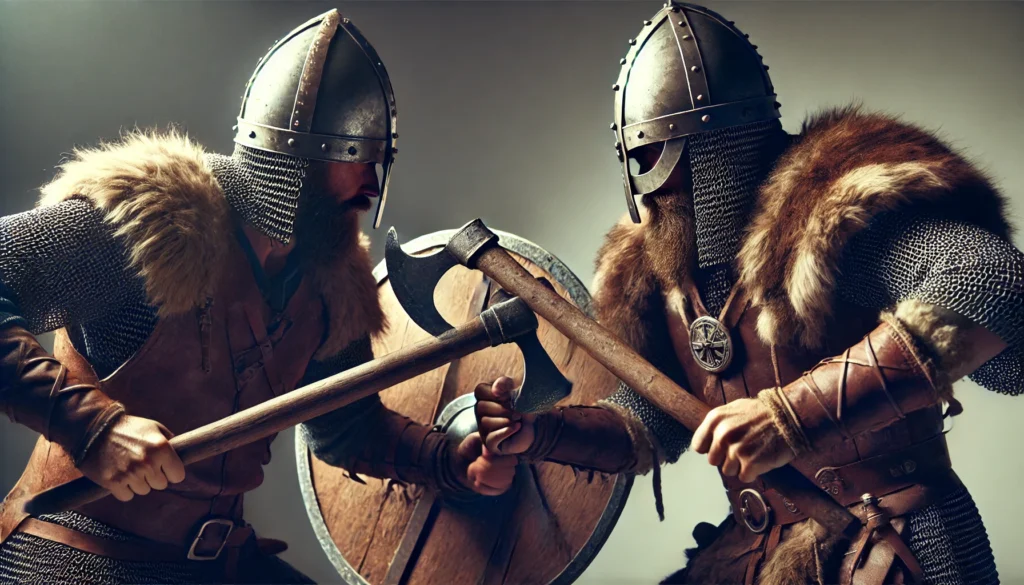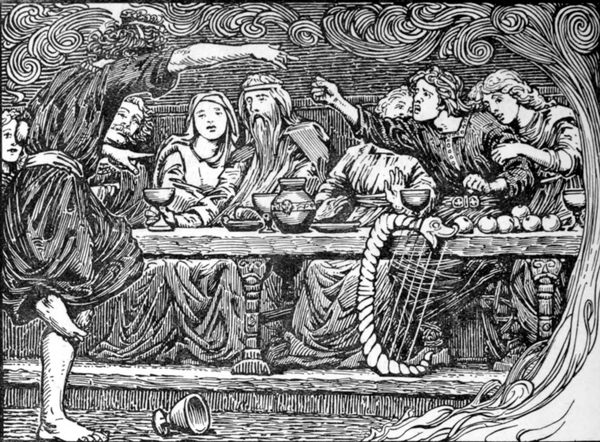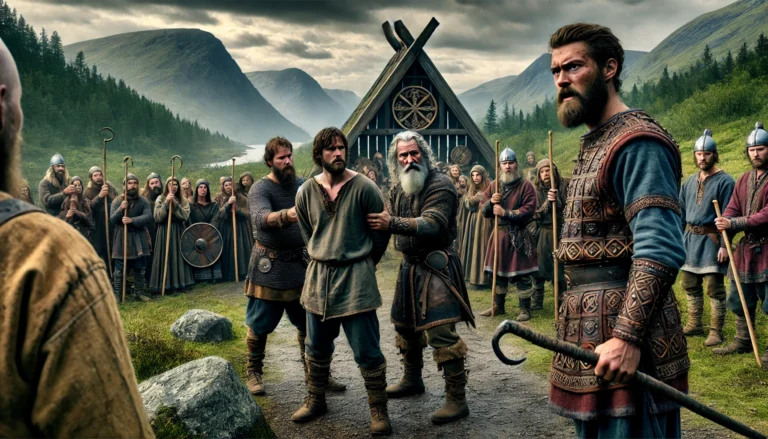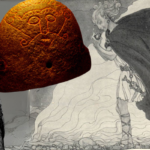While the Vikings did not have the kind of complex law and justice system that most countries have today, they had methods for managing communal justice.
Even before the Vikings began to write down their laws in the 13th century, individuals could behave in a way that was considered unacceptable by the broader community.
One of the most common punishments agreed by the community for a serious crime was exile or banishment.
But what did it mean to become an outlaw in the Viking world ?
Viking Crimes : Murder

Just as in the modern age, killing another person was not always considered a crime.
The Vikings would have recognized self-defense as a reasonable excuse for killing another person.
Killing was also considered acceptable if it was done openly and honestly.
A Viking could challenge another to a duel, making their intentions clear, and then completing the act publicly in front of witnesses.
Depending on the circumstances the killer might have to pay “weregild” or a “man price” to the family of the dead man to cover the cost of the loss.
Even the gods are seen paying weregild.
When the gods killed the giant Thjazi after he kidnapped the goddess Idun, the gods paid an agreed price to his daughter Skadi.
Similarly, when Loki killed Otr, a dwarf prince who had shapeshifted into an otter, he had to pay weregild to his father by covering the pelt he had taken from the dead otter in gold.
Revenge killings were not considered a serious crime and sometimes even considered necessary.
If one Viking killed another and the families did not settle the issue with weregild, a member of the second family, or even a close friend of the dead man, was honor-bound to take revenge by killing someone else in the first family.
This often led to blood feuds that could wipe out entire families in places like Iceland where communities were small.
The main principle when it came to killing was that it could not be deceitful, and you should give your opponent the right to defend themselves.
Killing another man in secret and then trying to cover up the fact was considered a serious crime. Fleeing into the night after killing someone made you a murderer.
Often whether you were considered a murderer or not depended on who was doing the killing and who was killed.
If someone thought that the killing of another Viking was “unjust,” even if it “followed the rules,” they could call them before the Thing, the local gathering of chiefs, and denounce their actions.
If the Thing agreed with the accusation, they could punish the accused, most often with a sentence of outlawry.
The outcome of these kinds of denunciations mostly depended on how much support each side had among the members of the Thing.
It wasn’t uncommon for Vikings to bring supporters and “goons” to Thing meetings to influence the outcome of event.
Viking Crimes : Insults and Injury

Killing was not the only crime that could result in a punishment of outlawry.
The Vikings also considered theft to be a very serious crime.
Of course, raiding and stealing were not the same thing.
Raiding foreign cities for their wealth was an acceptable economic proposition, but taking something from your neighbor was cowardice and underhanded.
Property damage could also be considered a crime.
In the Icelandic law codes, driving your cattle through another man’s land and damaging the land could result in a punishment of outlawry.
This was because mass damage to pastureland could put people in danger of starvation.
Using dark magic against another person was also considered a crime worthy of outlawry, but this is hard to unpick in the Icelandic sources.
Laws and stories about crimes all belong to the Christian period when most people had converted even if they retained some ancient beliefs.
Laws against black magic seem to have targeted pagans, and it is unclear whether the same attitudes existed in pagan times.
What is clear is what often mattered most was not the crime itself but the way it was done.
It had to be done with honor and transparency: you should be proud of your crime.
Of course, it also depended on who the crime was committed against.
When Egil Skallagrimsson offended King Erik Bloodaxe, his fate was sealed.
A Ruling of Outlawry

It is not true that the Vikings never passed death sentences.
While rare, there are stories of people being hanged or killed on the spot for crimes.
In this case, it was usually the very powerful, such as kings, passing these sentences, rather than the community as a whole.
Far more common was to make someone an outlaw, which could also be a death sentence.
If you were outlawed, you were excommunicated from your society.
If you were caught somewhere you shouldn’t be, anyone in the community had the right to kill you on the spot without facing any consequences.
This was very often the result of a sentence of outlawry because members of the injured family would often actively seek out the outlaw to kill them.
There were two levels of outlawry.
Lesser outlawry was exile for a fixed period, which was usually a minimum of three years.
While you were expected to leave the community as soon as the sentence was passed, lesser outlaws got some leeway.
In Iceland, they were allowed three buildings to dwell in while they waited to board a ship, which must happen within three years, and they were given safe passage to the harbor as long as they stayed off the main roads.
It may have taken months or years for an outlaw to find passage of Iceland.
Full outlawry also required a person to leave the community as soon as possible, but they were not to be housed, fed, or helped in any way.
Anyone who helped then could suffer their own charges of outlawry.
Full outlawry was known as skoggangr, and they became a skogarmadr, which means a “man of the forest.”
This is because they were often forced to flee into the harsh wilderness and live off the land.
They became little better than animals in the eyes of others and became fearful creatures as they did whatever they needed to survive.
It is speculated that many stories about trolls or monsters in the forest were actually stories about outlaws.
Famous Viking Outlaws

There are several famous Viking outlaws.
The most famous might be Erik the Red, who was outlawed from Iceland for three years, which allowed him to discover and begin the settlement of Greenland.
But in this and other cases, outlawry seems to be a storytelling trope, bringing a character to their lowest point before watching them rebuild their lives from nothing.
For most Vikings, a sentence of outlawry would have been a death sentence, either because of honor killing or the harsh conditions of living outside the community.
Perhaps a better example of an outlaw is Grettir Asmundarson, who wanted to become a monster-killing hero in a Christianizing Iceland.
After an encounter with a draugr (undead monster), he is cursed and accumulates bad luck.
As a result, he accidentally sets a house on fire and kills all its occupants.
He is made an outlaw and forced to live on the edge of society where he is hunted and betrayed by other outlaws until he dies a lonely and hunted man after 19 years of exile.
Similarly, a series of complicated family dynamics causes Gisli Sursson to kill his brother-in-law to avenge his other brother-in-law.
He is exiled because he escapes into the night rather than own his crime. He lives on the run and is eventually tracked down and killed.
In most cases, outlawry was a death sentence, or a fate worse the death.







